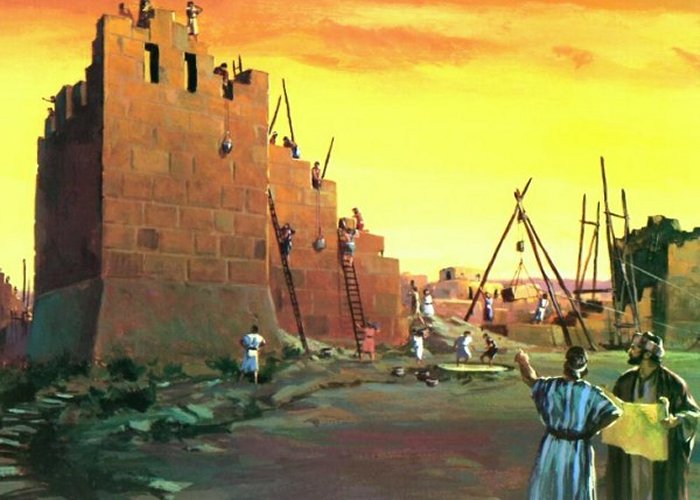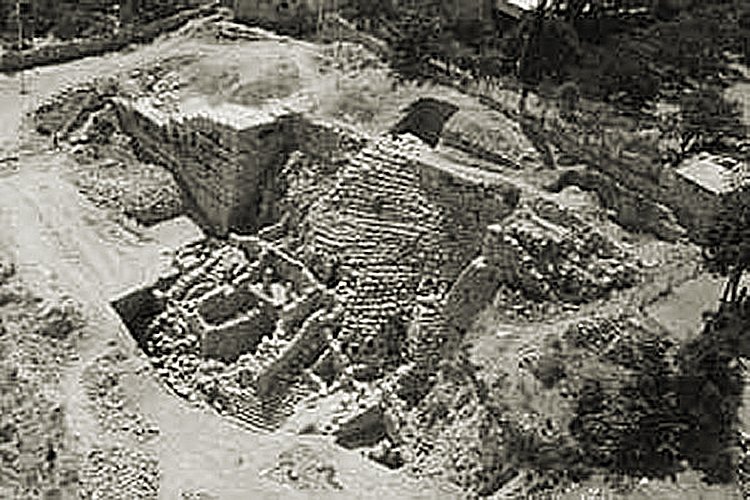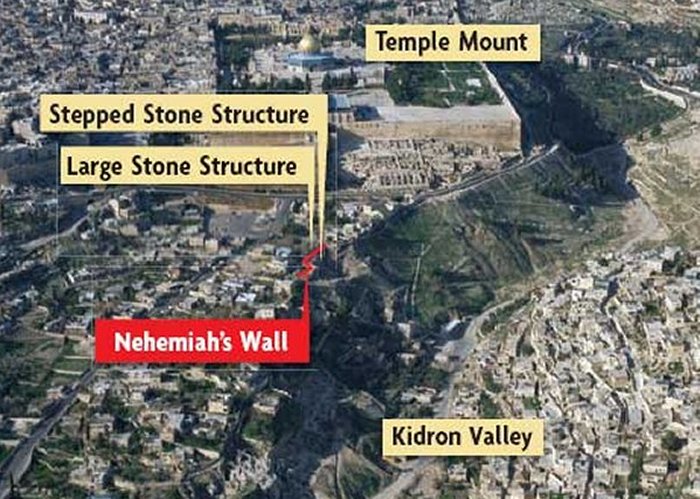Biblical Events Confirmed: The Jerusalem’s Wall That Nehemiah Built
A. Sutherland - AncientPages.com - A few years ago, archaeologists unearthed a long sought wall in Jerusalem's ancient City of David. The wall is described in the Bible's Book of Nehemiah written between 445 and 420 B.C.
According to a story, Nehemiah, a high official in the Persian court of King Artaxerxes I at the capital city of Susa, was very troubled that there was no wall to protect his beloved city of Jerusalem, its walls and gates.
With the king’s permission to return to Jerusalem and rebuild the city and its fortifications, Nehemiah began his trip to Jerusalem. He had even letters from the king to ensure safe passage and to obtain timber from the king’s forest for the gates and walls of Jerusalem.
Nehemiah 1:3,
"They said to me, 'Those who survived the exile and are back in the province are in great trouble and disgrace. The wall of Jerusalem is broken down, and its gates have been burned with fire."
When Jerusalem was destroyed by the Babylonians, Nehemiah went to the king Artaxerxes Longinus of Persia, and received a crucial for Jerusalem authorization.
Now he could rebuild his beloved city of Jerusalem, its walls and gates. Jerusalem had a chance to achieve its political restoration and again become a sovereign city-state.
At the top of the eastern ridge of the City of David, Nehemiah and the returned exiles built a new city wall. Although they simply repaired the pre-existing walls elsewhere in the city, the wall just above the steep Kidron Valley was too damaged and too difficult to mend. So they relocated the eastern wall higher up the slope and, according to author Eilat Mazar, built it directly on top of a ruined wall of King David's palace (also known as the Large Stone Structure) and its massive rampart (known as the Stepped Stone Structure). Photo: Zev Radovan
He promptly made his famous night journey around the city, surveying the dilapidated city wall (Nehemiah 2:11–15).
He gathered all the men of Israel to rebuild the wall in just 52 days and the people of Jerusalem were deeeply inspired by him.
Nehemiah 2:18,
"And they said, Let us rise up and build. So they strengthened their hands for this good work..." They did their best to complete the wall in a remarkable 52 days, despite much opposition.
Nehemiah was able to accomplish this feat by assigning different sections of the wall’s rebuilding to various groups such as families, people from specific settlements, craftsmen’s guilds and so on (Nehemiah 3:1–32). Each section was denoted by specific public landmarks such as existing gates and other known structures.

He gathered all the men of Israel to rebuild the wall in just 52 days and the people of Jerusalem were deeply inspired by him.
Nehemiah 6:15-16,
"So the wall was completed on the twenty-fifth of Elul, in fifty-two days. When all our enemies heard about this, all the surrounding nations were afraid and lost their self-confidence, because they realized that this work had been done with the help of our God."
In 2005, Dr. Eilat Mazar, of the Hebrew University and the Shalem Center, specializing in Jerusalem and Phoenician archeology, uncovered a small part of King David's royal palace constructed by King Hiram of Tyre, the contemporary Phoenician ruler and his ally against the Philistines.
Later, Dr. Mazar discovered an ancient, massive wall measuring 5 meters in width, located on the eastern side of the palace. Close to the palace wall stood a large stone tower where some pottery in form of arrowheads, shards and other artifacts was also found.
The aerial photo of the City of David and the Temple Mount locates Mazar’s excavation. A closer view of the area (taken before her excavation) clearly shows the well-known Stepped Stone Structure, flanked by the Northern (on the right) and Southern (on the left) towers. Connected to the Northern Tower, Mazar found Nehemiah’s wall and, near it, seal impressions of people mentioned in the Bible. Credits: Garo Nalbandian
"...Artifacts including pottery shards and arrowheads found under the tower suggested that both the tower and the nearby wall are from the 5th century B.C., the time of Nehemiah, Dr. Mazar, discoverer of the biblical wall from Nehemiah's time, said.
"The landmarks in the eastern wall were private homes, probably because here the wall was built higher up on the slope than the old wall, at the top of the crest rather than nearer the floor of the valley, where it had been before the Babylonian destruction.
True, the city became smaller this way (some of the old residential areas were now outside the city wall), but there were also fewer people living in the city, so there was no need for a big city."
2,500 years ago, Nehemiah worked very hard for his city of Jerusalem.
Today archaeologists in Israel work also very hard trying to unearth pieces of Nehemiah's great job, but perhaps what is most important, they try to achieve yet more important goal - to confirm the historical events in the Holy Bible.
Written by – A. Sutherland AncientPages.com Staff Writer
Copyright © AncientPages.com All rights reserved. This material may not be published, broadcast, rewritten or redistributed in whole or part without the express written permission of AncientPages.com
Expand for referencessource: BAS Library
More From Ancient Pages
-
 Silla: The Most Successful Of Three Korean Kingdoms
Featured Stories | Aug 22, 2023
Silla: The Most Successful Of Three Korean Kingdoms
Featured Stories | Aug 22, 2023 -
 Ancient Roman Coins Thought To Be Fakes Are Authentic – Experts Say
Archaeology | Nov 23, 2022
Ancient Roman Coins Thought To Be Fakes Are Authentic – Experts Say
Archaeology | Nov 23, 2022 -
 Resourceful Pre-Hispanic Society In Bolivia Had Flourishing Agriculture Despite Harsh Environment Of The Andes
Archaeology | Dec 24, 2017
Resourceful Pre-Hispanic Society In Bolivia Had Flourishing Agriculture Despite Harsh Environment Of The Andes
Archaeology | Dec 24, 2017 -
 Göbeklitepe-Like Kahin Tepe Is Oldest Worship Place In Black Sea Region – Interesting Finding
Archaeology | Sep 30, 2020
Göbeklitepe-Like Kahin Tepe Is Oldest Worship Place In Black Sea Region – Interesting Finding
Archaeology | Sep 30, 2020 -
 The Writing Ball: A Great Invention In 1870
Ancient History Facts | Jun 30, 2016
The Writing Ball: A Great Invention In 1870
Ancient History Facts | Jun 30, 2016 -
 On This Day In History: Most Notorious Roman Emperor Nero Committed Suicide – On June 9, 68 AD
News | Jun 9, 2016
On This Day In History: Most Notorious Roman Emperor Nero Committed Suicide – On June 9, 68 AD
News | Jun 9, 2016 -
 Ancient Jaintia Kingdom And The Garden Of Monoliths And Dolmens
Featured Stories | Nov 8, 2016
Ancient Jaintia Kingdom And The Garden Of Monoliths And Dolmens
Featured Stories | Nov 8, 2016 -
 Mystery Of The Ancient Bear Bones In The Aleutian Islands, Alaska
Archaeology | Oct 5, 2023
Mystery Of The Ancient Bear Bones In The Aleutian Islands, Alaska
Archaeology | Oct 5, 2023 -
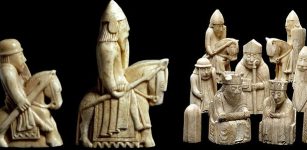 Mystery Of The Beautiful Viking Uig Chessmen Found On The Isle Of Lewis, Scotland
Artifacts | Dec 14, 2015
Mystery Of The Beautiful Viking Uig Chessmen Found On The Isle Of Lewis, Scotland
Artifacts | Dec 14, 2015 -
 William Adams: The Journey To Becoming The First White Samurai
Featured Stories | Jul 11, 2018
William Adams: The Journey To Becoming The First White Samurai
Featured Stories | Jul 11, 2018 -
 Ancient Egyptians Observed Algol’s Eclipses – Cairo Calendar Analyzed
Archaeology | Dec 19, 2015
Ancient Egyptians Observed Algol’s Eclipses – Cairo Calendar Analyzed
Archaeology | Dec 19, 2015 -
 The Great Pyramid And Ancient Egyptian Knowledge Shed Light On Biblical Mysteries – Resurrection Of The Flesh – Part 1
Featured Stories | Nov 25, 2019
The Great Pyramid And Ancient Egyptian Knowledge Shed Light On Biblical Mysteries – Resurrection Of The Flesh – Part 1
Featured Stories | Nov 25, 2019 -
 Our Lives Have Always Been Manipulated By Money – Part 1
Featured Stories | Jun 2, 2022
Our Lives Have Always Been Manipulated By Money – Part 1
Featured Stories | Jun 2, 2022 -
 Unexplained Teleportation Cases Of People – Ancient Times – Part 1
Featured Stories | Sep 30, 2019
Unexplained Teleportation Cases Of People – Ancient Times – Part 1
Featured Stories | Sep 30, 2019 -
 Sumerian ‘Mask Of Warka’ From Uruk: Sculptured Face May Depict Goddess Inanna
Featured Stories | Sep 15, 2016
Sumerian ‘Mask Of Warka’ From Uruk: Sculptured Face May Depict Goddess Inanna
Featured Stories | Sep 15, 2016 -
 Rare 17th Century Wreck Of Dutch Fluit Ship Found In The Baltic Sea By Finnish Divers
News | Aug 25, 2020
Rare 17th Century Wreck Of Dutch Fluit Ship Found In The Baltic Sea By Finnish Divers
News | Aug 25, 2020 -
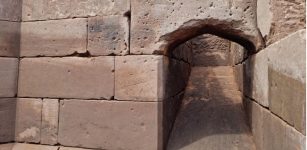 Unexpected Archaeological Discovery May Re-Write English Civil War History
Archaeology | Feb 3, 2023
Unexpected Archaeological Discovery May Re-Write English Civil War History
Archaeology | Feb 3, 2023 -
 Ancient Underwater City Of Heracleion Reveals More Archaeological Treasures
Archaeology | Jul 21, 2021
Ancient Underwater City Of Heracleion Reveals More Archaeological Treasures
Archaeology | Jul 21, 2021 -
 Excavations Reveal New Artifacts That Change History Of Ancient City Of Pergamon
Archaeology | Jul 4, 2020
Excavations Reveal New Artifacts That Change History Of Ancient City Of Pergamon
Archaeology | Jul 4, 2020 -
 Earliest Period Of Warfare In Europe Occurred Over 1,000 Years Earlier Than We Thought
Archaeology | Nov 3, 2023
Earliest Period Of Warfare In Europe Occurred Over 1,000 Years Earlier Than We Thought
Archaeology | Nov 3, 2023

